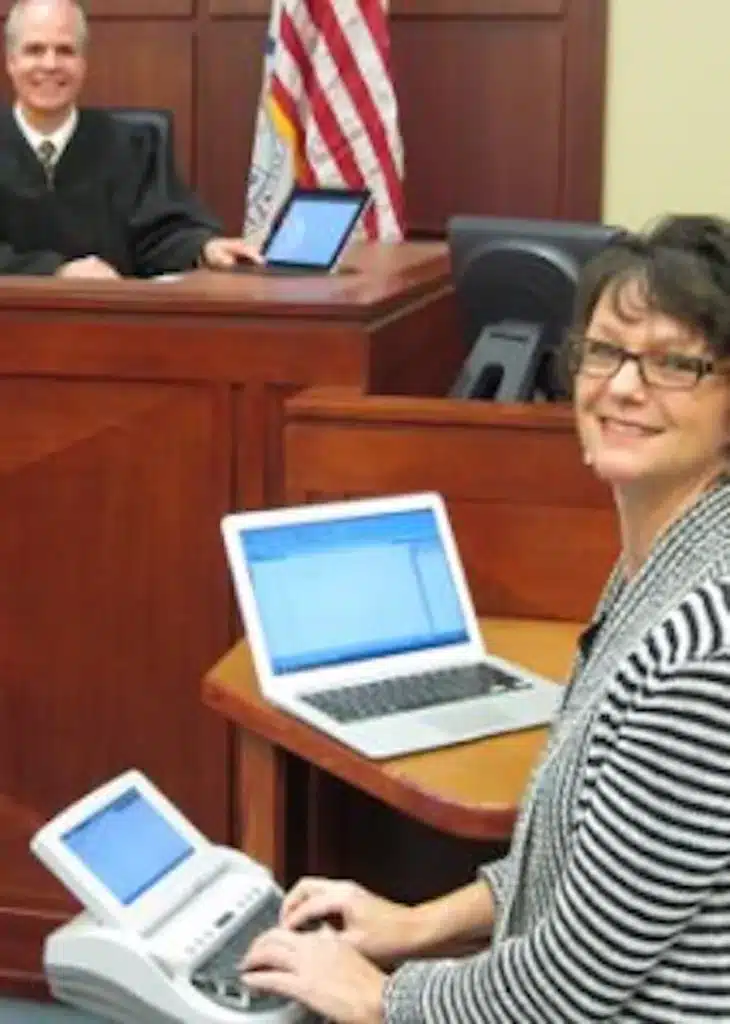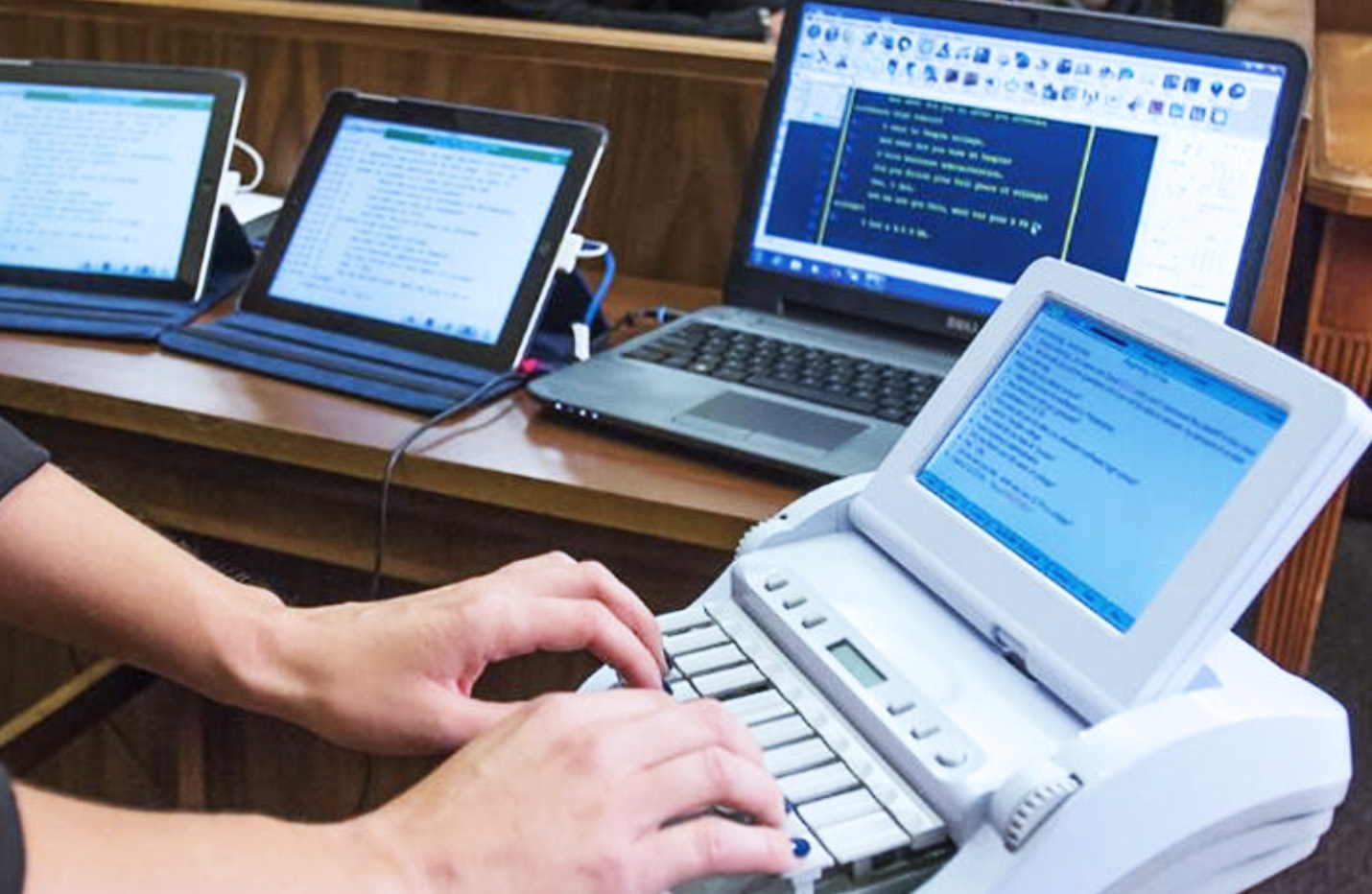How Court Reporting Works: A Step-by-Step Overview to the Lawful Process
Court reporting is a critical part of the legal system. It involves an organized procedure that ensures accurate documentation of process. From preparation to the final delivery of records, each action is vital. Comprehending how court press reporters operate offers understanding into the honesty of legal documents. The nuances of their work can exceptionally impact lawful outcomes, motivating questions regarding the methods and modern technologies they employ. What are the details methods that define this occupation?
The Role of Court Reporters in the Legal System
Court reporters play a crucial duty in the lawful system by giving precise and trusted records of court process. Their job guarantees that every spoken word during tests, hearings, and depositions is documented, which is important for keeping an official record of events. This transcription is basic for appeals, as it enables greater courts to evaluate the procedures and figure out if any type of errors were made during the trial.
Additionally, court reporters assist in maintaining the stability of the lawful process by developing verbatim records that can be described by lawyers, judges, and various other celebrations entailed in a case. They often make use of customized equipment and software to catch discussion with accuracy. Past the court room, their transcripts can act as vital historic records, supplying understanding into judicial procedures and the legal system's performance. Inevitably, court press reporters add greatly to transparency and accountability in legal issues.
Planning for a Court Reporting Session
Prep work is essential for a successful court reporting session, as it assures the precision and performance of the transcription procedure. Stenotype reporter begin by examining situation products, including pleadings and witness listings, to familiarize themselves with the terms and context. They additionally make particular that they have the essential devices, such as steno equipments, note pads, and back-up tools, ready for usage.
Before the session, interaction with legal groups is essential. Press reporters frequently clear up any type of particular requests regarding format or favored terms. Furthermore, they may arrange to consult with witnesses or lawyers to go over the proceedings and validate the routine. Arriving very early to establish up the equipment enables troubleshooting prospective technical concerns. In general, comprehensive prep work not only enhances the press reporter's confidence but also contributes substantially to creating a precise and clear document of the legal process.

Capturing the Record: Techniques and Equipment
Making use of sophisticated techniques and reputable tools, court press reporters diligently record the talked word throughout legal process. They use stenography, an approach including a specialized device that enables them to type several noises at the same time, thus recording dialogue in genuine time. This device, called a steno key-board, is geared up with tricks that stand for words and syllables, allowing swift and exact input.
Along with stenography, court press reporters may make use of audio recording gadgets as supplementary tools. These tools function as back-ups, ensuring that no important details is shed throughout proceedings. Some press reporters incorporate software that enhances their transcription efficiency, offering features such as voice recognition and automated format.
Correct positioning and emphasis are extremely important; press reporters have to keep interest on all speakers, capturing nuances and inflections that add to the document. With a combination of skill and technology, stenotype reporter copyright the honesty of the lawful process by guaranteeing a extensive and accurate document of occasions.
Recording the Proceedings
Recording the process calls for stenotype reporter to transform spoken dialogue into written message with remarkable accuracy and rate. This process generally happens instantly after the recording has been captured, making use of specialized software program that permits smooth transcription. Stenotype reporter need to pay attention diligently to the audio, making certain that every word, inflection, and pause is precisely represented in the records.
They frequently rely upon shorthand systems, personal transcription abilities, and progressed technology to promote this task. The atmosphere in which they function can be hectic and sometimes chaotic, as legal process typically entail multiple audio speakers and technical lingo. Court reporters have to likewise maintain concentration to catch nuances in tone and click this link context that may be crucial for the lawful record. Inevitably, the accuracy of the transcription is important, as it serves as a main paper for future recommendation in legal procedures.
Evaluating and Modifying the Records
The procedure of evaluating and modifying the transcript is crucial for ensuring precision in court reporting. Court press reporters typically collaborate with lawyers to clear up any kind of obscurities and confirm the accuracy of the videotaped declarations. This collaboration is vital for maintaining the stability of the legal record.
Importance of Accuracy
Precision offers as the keystone of reliable court reporting, as also small errors can substantially change the significance of lawful process. The examining and modifying process is vital in making sure that records show the spoken word with fidelity. Stenotype reporter meticulously verify names, technological terms, and lawful jargon to preserve precision. This attention to information aids stop misconceptions that can influence situation results. Accuracy fosters trust fund among lawful experts, clients, and the court, strengthening the honesty of the judicial system. Mistakes can cause disagreements or charms, making it necessary for press reporters to fine-tune their work thoroughly. Ultimately, the search of precision not only enhances the integrity of the records however likewise upholds the standards of the lawful occupation.
Partnership With Lawyers
Cooperation between stenotype reporter and lawyers is critical throughout the evaluating and editing stage of transcript production. This procedure ensures that the final paper precisely mirrors the talked word and complies with lawful standards. Attorneys usually examine transcripts for details terminology, context, and any possible errors that could affect the case. Stenotype reporter rely upon attorneys' expertise to make clear ambiguous areas or emphasize essential statements. Reliable communication is essential; lawyers might provide comments or demand corrections, which court reporters need to deal with promptly. This partnership not just boosts the top quality of the transcript but also adds to a smoother lawful process. Eventually, collaborative initiatives result in a dependable and precise record, essential for future recommendations and legal procedures.
Delivering the Last Records to Customers
Upon completion of the transcription procedure, court reporters meticulously prepare the last paper for delivery to their clients. This last records goes through extensive proofreading to ensure precision, as any mistakes can considerably influence lawful process. Court press reporters layout the paper according to the details needs stated by the clients or lawful firms, including pagination, indexing, and address any essential displays.

Court reporters may offer a cover letter summarizing key information and using additional support if required. This extensive approach warranties that clients get a polished, precise, and conveniently navigable transcript, essential for their lawful demands.
Often Asked Inquiries
What Qualifications Are Required to Become a Court Reporter?
To come to be a court reporter, people usually require a secondary school diploma, conclusion of a court reporting program, and certification or licensure, depending upon state needs. durham court reporting. Proficiency in shorthand and innovation is also necessary for success
The length of time Does It Take to Complete Court Reporting Training?
Usually, finishing court reporting training takes between 18 months to 4 years, depending on the program's strength, the student's speed, and the specific needs of the jurisdiction in which they want to practice.

What Is the Typical Wage of a Court Reporter?
The typical wage of a stenotype reporter differs by area and experience, typically varying from $45,000 to $100,000 every year (durham court reporting). Variables such as expertise and demand can considerably affect their incomes in various regions
Are Court Reporters Required to Have Accreditation?
Court reporters are generally required to obtain certification, which assures they have the necessary skills and expertise for exact transcription. Qualification requirements can vary by state or jurisdiction, showing expert requirements within the lawful neighborhood.
Can Court Reporters Job From Another Location or Freelance?
Stenotype reporter can work remotely or freelance, offering versatility in their occupation. Several make use of modern technology to transcribe proceedings from numerous places, permitting varied chances in the legal field while maintaining a work-life that site equilibrium.
Court reporters play a vital role in the legal system by giving exact and reputable records of court process. Additionally, court reporters aid in preserving the stability of the lawful procedure by producing verbatim documents that can be referred to by attorneys, judges, and various other celebrations involved in an instance. Utilizing sophisticated techniques and dependable equipment, court reporters meticulously record the talked word throughout lawful process. Court reporters must likewise maintain focus to record nuances in tone and context that might be important for the lawful record. To end up being a court press reporter, individuals normally need a high institution diploma, conclusion of a court reporting program, and certification or licensure, depending on state requirements.